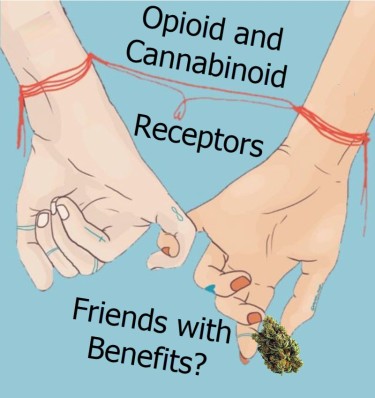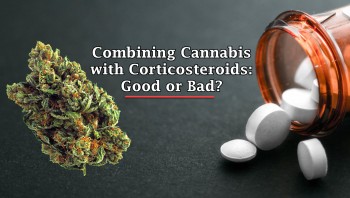
Cannabis Terpenes as Effective as Morphine
As a passionate advocate for the therapeutic potential of cannabis, I know firsthand the tremendous relief it can provide for a wide range of medical conditions. In fact, chronic pain is consistently cited as the number one reason people turn to medical cannabis for help. This is incredibly good news, especially considering the devastating toll that opioids take on our society, claiming over 80,000 lives each year in the U.S. alone. Having a safer, non-addictive alternative like cannabis could potentially save countless lives.
Fortunately, a groundbreaking new study has revealed that cannabis terpenes, the aromatic compounds that give different strains their distinctive smells and flavors, are as effective as morphine when it comes to treating pain in animal models. Even more promising, the terpenes appeared to enhance morphine's analgesic effects when used in combination, while avoiding the euphoria and addiction potential of opioids on their own.
In this article, we're going to take a deep dive into the details of this fascinating study to better understand the remarkable potential of cannabis terpenes for treating chronic pain. We'll explore the specific terpenes evaluated, their mechanisms of action, optimal routes of administration, and what implications the findings may have for the future of pain management. By unpacking the wealth of information contained in this research, we can gain valuable insights into how terpenes and other minor constituents of cannabis may help unlock the plant's full therapeutic potential.
Death by numbers
Every year, tens of thousands of lives are tragically lost to drug overdoses in the United States. While illegal drugs certainly play a role, a closer look at the data reveals a disturbing truth: prescription opioids are actually the leading cause of these overdose deaths. In 2022 alone, a staggering 81,806 overdose deaths involved opioids, with synthetic opioids like fentanyl being the primary driver behind this crisis.
The overprescription of powerful painkillers like oxycodone (OxyContin) and hydrocodone (Vicodin) by pharmaceutical companies and doctors is directly fueling this epidemic. Since being granted a virtual monopoly on drug manufacturing, distribution, and research under the Controlled Substances Act of 1971 signed by President Nixon, Big Pharma has engaged in unethical and aggressive marketing tactics to boost profits at the expense of public health. By downplaying the risks of addiction and overstating the benefits of long-term opioid use for chronic pain, they've helped create a nation of accidental addicts.
The statistics paint a grim picture. In 2022, prescription opioids were involved in 14,716 overdose deaths. For many, the path to addiction began with a legitimate prescription for acute pain or surgery recovery. But as their bodies developed a dependence and doctors became more reluctant to continue prescribing high doses, these patients were left to seek out illicit alternatives like heroin and fentanyl on the streets. In fact, nearly 80% of overdose deaths involving heroin in 2022 also involved synthetic opioids like fentanyl, illustrating how prescription opioid addiction often progresses to more dangerous substances.
Pharmaceutical giants like Purdue Pharma, owned by the notorious Sackler family, have faced numerous lawsuits over their role in the opioid crisis. They've been accused of using misleading marketing, downplaying addiction risks, and incentivizing doctors to prescribe more opioids. Other companies like Pfizer have a long history of putting profits over patient safety. From 1991-2017, Pfizer was fined $4.7 billion for wrongdoing, settling criminal and civil allegations that included illegal marketing of drugs and defrauding the state Medicaid programs.
Meanwhile, the federal government continues to classify cannabis as a Schedule I drug with "no accepted medical use," despite its proven potential to treat chronic pain and reduce opioid use. This stance conveniently protects the profits of pharmaceutical companies who view cannabis as a threat to their bottom line. By denying patients access to a safer, non-addictive alternative, they ensure a steady stream of customers for their deadly opioids.
The opioid epidemic is a tragic example of what happens when we prioritize corporate greed over public health. It's time to hold Big Pharma accountable for the devastation they've caused and demand a new approach to pain management that includes cannabis and other non-opioid alternatives. Only then can we begin to reverse this deadly trend and save countless lives from being needlessly lost to prescription drug abuse.
Is cannabis the answer?
As the opioid epidemic continues to claim lives at an alarming rate, researchers are desperately searching for safer alternatives to manage chronic pain. A groundbreaking new study has revealed that cannabis terpenes, the aromatic compounds that give the plant its distinctive smell, may hold the key to unlocking a powerful, non-addictive pain reliever.
The study, published in the journal PAIN, found that certain cannabis terpenes were as effective as morphine in reducing markers of pain in mice. When injected, terpenes like beta-caryophyllene and geraniol produced pain relief comparable to a moderate dose of morphine, without any signs of reward or addiction potential. Even more promising, combining low doses of terpenes with morphine enhanced its pain-relieving effects, suggesting a potential for combination therapy that could reduce the risk of opioid dependence.
Interestingly, the route of administration played a crucial role in the terpenes' effectiveness. While injection produced significant pain relief, oral administration and inhalation had little to no effect on pain markers. This could be due to differences in bioavailability or metabolism when terpenes are ingested or inhaled compared to direct injection.
The implications of this research are profound. If cannabis terpenes can be harnessed as an effective pain treatment, it could provide a much-needed alternative to opioids and help curb the addiction epidemic. However, the pharmaceutical industry and government regulators seem intent on maintaining control over cannabis rather than making it widely accessible.
The DEA's recent proposal to move cannabis from Schedule I to Schedule III may seem like a step in the right direction, but it actually allows Big Pharma to monopolize the medicinal cannabis market. By keeping it a controlled substance, they ensure that only FDA-approved, patented medications derived from cannabis will be legally available. This shuts out whole-plant medicine and denies patients access to the full spectrum of beneficial compounds in cannabis, including terpenes.
To truly unleash the potential of cannabis as a pain treatment, we need to push for full legalization and reject attempts by the pharmaceutical industry to co-opt this versatile plant. Only then can patients and doctors freely explore the most effective ways to harness its therapeutic properties, whether through isolated terpenes, whole-plant extracts, or personalized combinations tailored to individual needs.
Every day, the opioid epidemic claims more lives, tearing families apart and devastating communities across the country. At the heart of this crisis are synthetic opioids like fentanyl, which have flooded the illicit drug market and dramatically increased the risk of overdose deaths. But why are these deadly substances so readily available? The answer lies in the failed policy of drug prohibition.
As cannabis legalization has gained momentum in recent years, drug cartels have shifted their focus to more potent and profitable substances like fentanyl. It's easier to smuggle, harder to detect, and creates a powerful addiction that keeps customers coming back. Prohibition has not only failed to curb drug use, but it has actually made the problem worse by driving the market underground and into the hands of dangerous criminal organizations.
Meanwhile, a safer alternative has been staring us in the face all along: cannabis. This versatile plant has proven to be an effective pain reliever with a much lower risk of addiction and virtually no risk of overdose. The recent discovery that cannabis terpenes can rival the pain-relieving effects of morphine without the same addiction potential is a game-changer. It offers hope for a future where patients can manage chronic pain without the fear of becoming dependent on dangerous opioids.
But instead of embracing this natural solution, the government seems intent on maintaining tight control over cannabis. The DEA's proposal to reschedule cannabis to Schedule III is nothing more than a cynical attempt to appease the pharmaceutical industry. It would allow them to monopolize the medicinal cannabis market with patented, FDA-approved medications while shutting out whole-plant medicine and denying patients access to the full spectrum of beneficial compounds in the plant.
This move is a slap in the face to the countless individuals and families who have suffered under the opioid epidemic and the failed war on drugs. It's a reminder that our current drug policies are not based on science, compassion, or public health, but rather on profits and political expediency.
As voters and citizens, we must demand a new approach. We need to question whether prohibition is truly the answer, or if it's time to rethink our entire strategy for dealing with drugs in society. How many breakthroughs like the discovery of terpenes' pain-relieving properties have we missed out on because of the strict barriers to cannabis research? How many lives could have been saved if we had prioritized harm reduction and evidence-based policies over punishment and stigma?
The Sticky Bottom Line
The sticky bottom line is that our current approach to drugs is broken, and it's costing us far too many lives. We need bold, compassionate leadership that is willing to challenge the status quo and put people's health and well-being first. The next time you head to the ballot box, think about the lives lost to the opioid epidemic, the potential of cannabis as a safer alternative, and the urgent need for change. Together, we can build a future where substance use is treated as a public health issue, not a criminal one, and where everyone has access to the care and support they need to thrive.






